Part One – The Preparation
The day dawned bright and sunny in Rotterdam. I turned on the TV, caught up with the news on BBC Breakfast News, and slowly went about preparing for the marathon. I continued by watching the rerun of Match of the Day whilst I meticulously consumed muesli bars at exactly the right moment, followed by a lot of liquid – the air con in the hotel room had left me seriously dehydrated. Having the BBC on whilst preparing was oddly comforting – I may have been in a hotel room in Europe, but this is pretty much exactly how I prepare for a race when I am at home. At 9:30 the BBC began their coverage of the London Marathon – the familiar stirring anthem of a theme tune (AKA Rod Goodwin’s The Trap) producing the appropriate level of goose bumps and the curtain call for me to head out and run a marathon that was, for today only, a little closer to home.
I had goose bumps of a different kind on exiting the hotel. Although sunny, the wind was stiff and cold, blowing in off the North Sea. Wearing only my club T-shirt (I hadn’t thought about wearing disposable clothing when it came to packing) I walked as slowly as possible to conserve energy, but as briskly as possible so as not to get too cold. Ten minutes or so later and I was at the race HQ, a confused mass of runners, fences, precious little in the way of information or Portaloos… No one seemed to be particularly concerned, I guess I’ve grown accustomed to British race standards which, with the London Marathon somewhere near the top in terms of slick organisation, seem to just be a little more organised. Still this race has something of an old school feel to it – not a charity tent nor fancy dressed runner Z list celebrity runner to be seen for instance, and that in its own way, felt positively refreshing.
I queued patiently by one of the few Portaloos for around half an hour. By the time my turn was done there were less than fifteen minutes to the start. A small panic ensued as I realised I had no idea where the start line was and queues to get anywhere were frustratingly slow. I found Pen B to be told Pen C (My pen start) was over the road and I’d need to go down into the Metro station to get there. Fine, I thought. A little odd, but it worked well, and with seven minutes to spare I found myself in the familiar position of being warm, packed like sardines, toe to toe with hundreds of other runners awaiting the start.
Making final use of a urinal placed next to the start line (Very handy), five minutes before the off, a man in a cherry picker was slowly raised above all the runners and, to great applause, began to sing You’ll Never Walk Alone, best known to the British as the anthem of the Kop at Liverpool FC. Crazy Dutch! I thought to myself as I found myself singing along passionately to the rousing finale with 14,000 odd other runners. With Britain commemorating 25 years to the weekend of the tragic events at Hillsborough the singing of this song had an unlikely poignancy to a few of the runners lined up.
I later found out that the singer was a famous local, broadly the equivalent of our Susan Boyle, and that You’ll Never Walk Alone was also adopted by the fans of Rotterdam’s Feyenoord FC. This rousing rendition is apparently a pre-Rotterdam Marathon tradition and it certainly did the trick of bringing the anticipation of the rapidly approaching off to boiling point.
Part Two – The Race
With some spine tingling build up music just about drowning out the noise of the helicopter above – the race was being shown live on Dutch television – there was a swift 5 down to 1 countdown and – we were off! It took around 30 seconds to cross the start and it was apparent any fears of making too fast a getaway were redundant here in Rotterdam. Indeed anyone who likes to get into their stride and pace as soon as possible would have been in mild panic mode as we struggled to break eight minutes per mile for the opening couple of minutes.
Those first minutes were anxious. I’d not run at all since Wednesday and I’d no idea how the legs had faired in terms of recovery from the injuries I’d suffered, especially the left thigh and hip, which just a week earlier had seen me forced to stop every ten minutes or so on my final long run of training. The first steps were promising: there was a very mild discomfort in the left hip but nothing of the shooting pains I’d suffered in the Coventry Half Marathon, nor the old man shuffle hip trouble I’d suffered for pretty much every run in the past three weeks. Coming towards the end of the mile and I felt no need to stop, stretch, or cry in despair, so I was relatively confident the first hurdle had been tackled.
For those I haven’t bored to tears a thousand times – here is my simple plan to running a marathon (Too simple to market for profit, sadly. Or maybe not, looking at the efforts of others…), tried and tested with 100% success (One injury inflicted race excepted) since 2006. It is all a matter of listening to your heart rate (And the figures are personal to me, not necessarily relevant to other people):
First mile: Build up slowly to a maximum of 150BPM, ideally this should be around 30-40 seconds slower than your planned marathon pace.
Second mile: Allow heart rate to rise to a maximum of 160BPM, the pace should be 10-15 seconds off your planned marathon pace.
Miles three to twenty: Allow the heart rate to rise no higher than 165BPM – this restriction will determine your marathon pace on the day of the race. Therefore if you were finding yourself running 5:59 at marathon heart rate four days earlier, if, on the day, you are only able to max out at 6:20 per mile – so be it. Hard to take, maybe, but the philosophy is you only have reserves to sustain racing at <165 BPM; stray into the red zone beyond 165BPM and you will pay for it at some point in the closing stages.
Miles twenty to the finish (26.2): The maximum heart rate limit is waived, allowing you to go full beans. On a great day, you will run the final 10k faster than any of the others; on a good day, you will maintain the pace you’d maintained from miles 3-20; On an average day, you’ll see a gentle fade in mile splits; on a bad day – something goes wrong.
The plan, boring, clinical, unromantic as it may be, has never seen a bad day. I’ve not yet hit any kind of wall in the closing stages of a marathon. The first time I tried running to heart rate – 2005 – I was disappointed that my pace was slower in the race than it had been in training. I put the increased HR down to adrenaline, so I allowed it to run closer to 170 BPM than 165 BPM. The last seven miles were slow and very painful. Since then I’ve stuck religiously to plan, accepted no excuses for going into the red zone and I’ve come up trumps. The somewhat tedious business of being restricted to a figure on your watch for the opening 20 miles rather than running uninhibited is usually more than made up by running free for the final 10k, usually passing loads of runners who were a little too enthusiastic in the opening miles and who nearly always pay the price.
So Mile 1, I stuck to 150 BPM max. It took most of the mile to be able to run at pace thanks to the volume of runners and it included perhaps the biggest incline of the race over a large bridge, so it was clocked at 7:02. Not a disaster, but slower than was planned. Mile 2 though made up for it as we were descending over the other side of the bridge plus had the stiff breeze blowing behind us. My heart rate a little too easily climbed to the second mile limit of 160 bpm, a forewarning of what I was to face for much of the rest of the race. The watch clocked the second mile at 6:12, quicker than planned and probably had me back on schedule.
Mile three was more of the same and a similar split as I settled into a rhythm and allowed the heart rate to reach its maximum of 165bpm. All too readily though it would creep above by 2-3 beats and I’d have to peg it back. This was frustrating but a necessity. I think one reason for this creeping was a lack of marathon heart rate runs in the build up. In previous years they were at least once a week; this year it was more once a fortnight. Something to think about for future races.
Approaching 5k and I was to take my first of six Powergels (To be taken at 3, 7, 11, 15, 19 and 22 miles), all neatly fastened with pins to my gel belt. The gel was consumed without problem but the first station was something of a farce for me. The first things to be handed out were paper cups with a sponge on top and water a filled around a third of the way up. I don’t need a sponge, I need a bottle of water! I said to myself (And probably said out loud too) and dropped it to the floor. These were being handed out for some way down the road, then the next two tables were handing out the local brew of isotonic drink. Damn! There are no bottles of water at this race! Realising my error and aware that with the gels it was important to take on liquid, I grabbed some isotonic and drank as much as I could without spilling the contents all over me (A hazard of drinking from cups whilst running). This was a big risk as it is considered something of a racing sin to try a brand of isotonic in a race without having first tried it out in training. I made that mistake once before at the London Marathon when I was offered a pouch of L****ade and promptly vomited the contents back onto the streets of London. Thankfully on this occasion the green liquid was kind to me and I happily quaffed a bit more at some of the subsequent stations.
The run to 10k (I was starting to think as a local in kilometres, although Garmin and my mind deep down were still very much in miles) had two surprises – one good and one not so. The pleasant surprise was the crowd support. Whilst we are not talking London Marathon volumes or Boston delirium there was, for the majority of the course, lines of spectators enthusiastically cheering us along our way. A major bonus was that every runner had their Christian names printed on their running number. I’d first seen this at last year’s Manchester Marathon, although they printed the names a little too small – only those with 20-20 vision could make out your name unless you were close enough to get intimate (and a marathon is no place to be intimate, no matter who is cheering you on). Here the names were writ large and it wasn’t long before the chant of Martchoo! Martchoo! (Roughly translated from Dutch as Matthew) became a familiar and welcome addition to my race.
The unpleasant surprise was that, after four miles of not realising we’d been running with the wind behind us, the course turned 180 and we were faced with a fairly potent head wind – the kind strong enough for you to want to find a tall runner and take shelter. Up to around 15 miles the head wind would be a sporadic affair, more often than not it was a benign side wind, but you knew at some point it was going to be a feature – the question was: when?
At 7.5 km there was a race sign for Refreshments. This had me intrigued, what morsels were on offer here then? The answer: Sponges. The Dutch, it seems, love their sponges. Not only were the drinks stations semi-sponge stops, they complimented them every 5km with dedicated sponge stations. I wasn’t complaining though, I’ve long lamented the apparent demise of the sponge station in Britain – the cooling effect on the skin can be more effective than a mouthful of water that you may or may not half choke on. They are also useful for cleaning the hands and face of Powergel residue that didn’t quite make it into the mouth. Although sunny, the race was not particularly warm, only around 14C, so the sponges were only partially beneficial, but they were still a welcome addition.
I nearly became a cropper approaching the second drinks station at 10k, a sign in Dutch appeared to take us into a slip road which I assumed was the drinks station area. WRONG! This was the first stop for the marathon relay race taking place. Thankfully I was guided onto the right path at the last moment and went though the 10k chip mat in 39:52. Miles 4-6 were pretty much spot on what I had in mind to run at for the race, but I was around 30 seconds down on my watch for sub 2:45 pace, a figure that stayed stubbornly similar for much of the next 14 miles.
It was at this point in the race I became aware that I had three injury concerns to nurse through the race. Firstly was the left hip and thigh, which was nothing but a grumble and I was happy that I could manage that without too much concern – even if its presence was likely costing me a few seconds per mile. Secondly was the left calf which gave worrisome twinges of tightness every few minutes. There was nothing I could do about that except hope it didn’t turn into a race ending pull or cramp (Thankfully it didn’t). Finally there was the right Achilles. This had crept up on me in the two weeks or so before the marathon. It was so minor I didn’t think to mention it to my massage man on Thursday, reckoning only that it should be something for his attention when I next see him. Now I was wishing I had alerted him because it was hurting, and hurting a fair amount. The last time an Achilles had hurt like this was on track in January 2013. Then though the pain went from bearable to f*** I’m never walking again in seconds. After a couple of miles of this mild Achilles pain I was satisfied it wasn’t going to stop me dead in my tracks. It was now just a case of ignoring it as best as possible, and maybe not racing in these Fly Knit trainers again.
Mile seven marked a turning spot for the race. It was when the marathon suddenly seemed like a very long way. With no discernable change in conditions, the 6:06 – 6:10 miles suddenly became a trio of 6:17 miles. Still spot on for a sub 2:45 but a sign that this was not going to be the dream 2:40 race. I continued to struggle to keep the heart rate down. I don’t normally talk to people much in races but at this point I chimed into a conversation an Irishman and a Dutchman were having (Not in a bar….) I was only with them for a mile or two but I thought the distraction may ease up the heart rate a touch. Whether it worked is debatable but it was enjoyable to just run a couple of miles and enjoy the race without fretting too much over splits or heart rates.
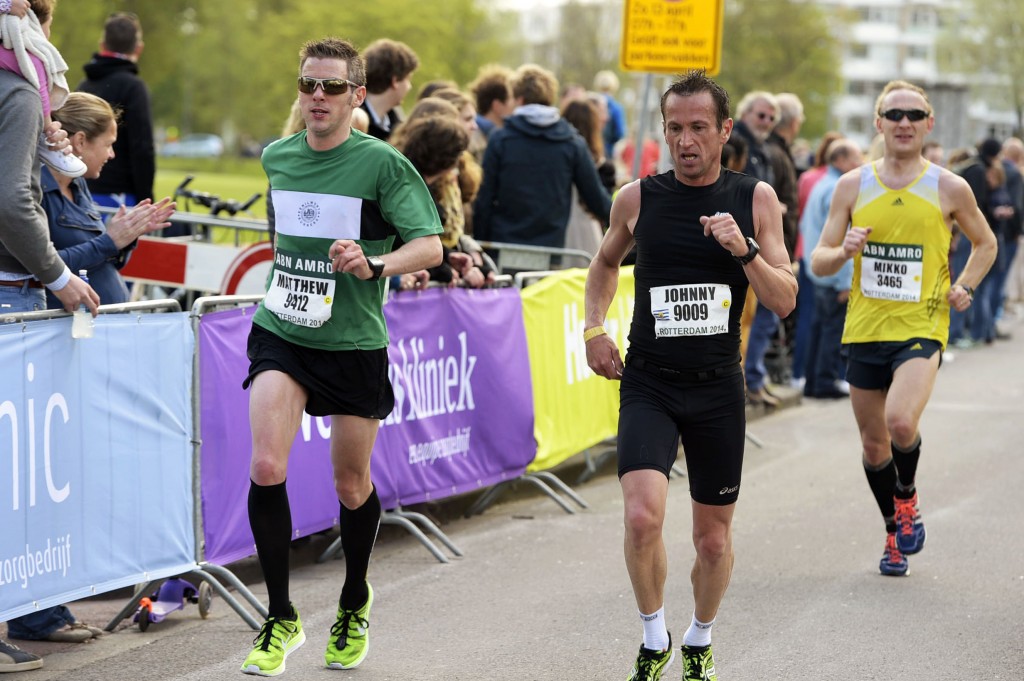
I left them at around 11 miles as they had a time a little slower than I had in mind. Miles 7-12 were mentally quite tough. Thankfully miles 13-20 were generally much happier and flew by relatively speaking. I went through halfway in 1:23:34 which was disappointingly around a minute down on 2:45 pace. I thought though if I could hold it together to 20 miles I would be able to make up some or all of the time in the final 10k. At around 15 miles we headed back on the road we took in the opening 5k and had a pretty tough head wind to face back over the bridge and to the city centre. They were tempered however by some of the largest, most vociferous crowds of the race. At sixteen miles I started to suffer from mild stomach cramps, not enough to see me bent over double (Or even worse, squatting Paula style (Which I had the misfortune to witness first hand with a white Lycra clad man in bushes at 21 miles), but enough for me to quizzically look round for the availability of Portaloos should the worst happen. Miles 14-16 were just under 6:17 pace, 17-19 just over. A spur of inspiration came as race winner Eliud Kipchoge came flying past us as he was hitting 39km, en route to a pretty special 2:05:00. I went through 30km in 1:58:50, which was around six minutes slower than I’’d run at the infinitely more hilly Stamford 30k in February.
The run to mile 20 was pleasant as we left the crowds in the City Centre and headed onto a wide, tree lined, road. I was feeling pretty fresh, all things considered, and with the 19 mile gel quickly digesting, was looking forward to the watch clocking the 20 mile split, which meant the start of heart rate restriction free running. The Garmin was telling me I was 36 seconds down on attaining a 6:17 pace and with a gentle acceleration I went about chasing those seconds down.
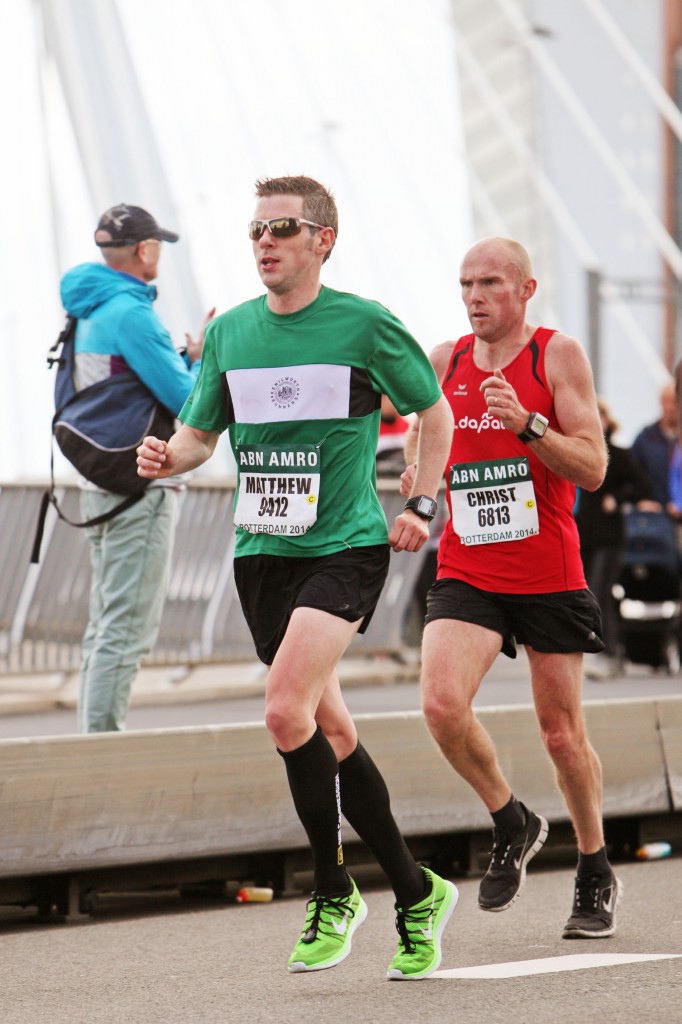
Those extra heart beats, in reality amounting to no more than three to six more than I had been beating per minute for the past 120 minutes or so, were the equivalent of a race car driver winding up the turbo boost on his race car. For a couple of miles I felt fantastic, clocking 6:01 at mile 21 and 6:03 at mile 22 and was on 5:50 pace for the first half of that mile. I looked at my virtual race partner – I was ten seconds up on sub 2:45 pace. The dream was alive again!
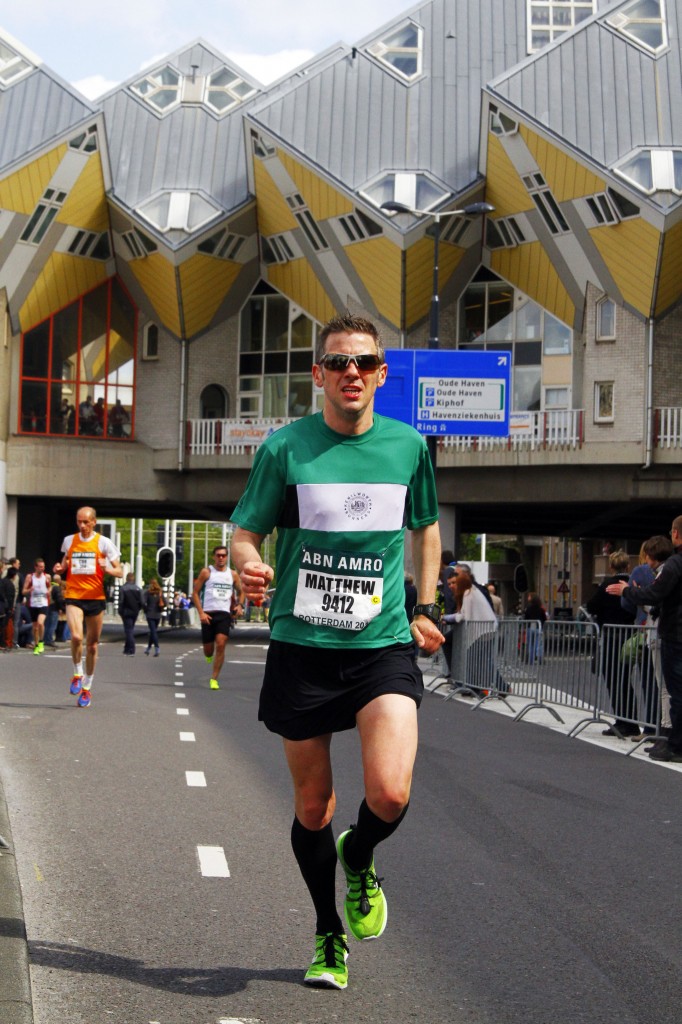
I took my final gel then made a ninety degree turn and slowly the dream began to unravel. Running more or less alone, there was a stiff head wind that slowed me uncontrollably. For most of the remainder of the race, the head wind persisted and the pace slowly faded with it. Mile 23 was a 6:17 – the dream was hanging by a thread. Mile 24 was 6:28 – it was passing through my fingers.
37k was meant to be a spot for some light relief in the form of friends and family submitted messages appearing on a big screen we passed there and again 500m from the finish. I saw it in the distance and there they were, messages of support scrolling down. I knew that some had been written for me. There were just two runners ahead of us, surely mine would appear as I passed the chip mat below me? What I got was an extended advert for New Balance trainers. Just my luck! For a second I thought I might stop and wait, but I thankfully came to my senses
What I couldn’t control though was the inexorable late marathon fade. When it hits, the game is a battle of half the body and mind saying – come on! Just a couple of miles more effort! You’re nearly there! Put everything in and you have as long as you like to rest later! whereas the other half is saying – you’re tired! Why don’t you quit?! It would be nice if you quit! It won’t hurt so bad if you quit! Quit! Go on – QUIT!
Thankfully my salvation came in the form of othernovelty of marathon running – the lack of sensible brain function late in the race. As my watch clicked on 24 miles, I reckoned that all I had to do was maintain 6:17 pace and 2:45 was mine. As I passed through 40 km in 2:38:08 I was under the impression that this confirmed it – all I had to do was run 3:20 or so kilometres and the target was mine.
And so began a very, very long sprint for home. I gave it everything: eyeballs out; blanking out the head wind; the crowd; the Garmin (which was actually telling me I was barely speeding up at all, despite it feeling like I was putting in a sub 4 minute mile effort); the aching legs; the pain; the doubt. I totally missed the supporters’ message board at 500 meters out (I’m not sure it was even there). I turned the final corner – 400 meters from home. I looked at my watch – 2:45 ticked over. The dream was over. I pushed on, the PB of 2:50:23 was breakable(!) I dug deep and deeper, the 100 meter boards slowly ticking down. 2:46 passed, surely I’ll break 2:47?
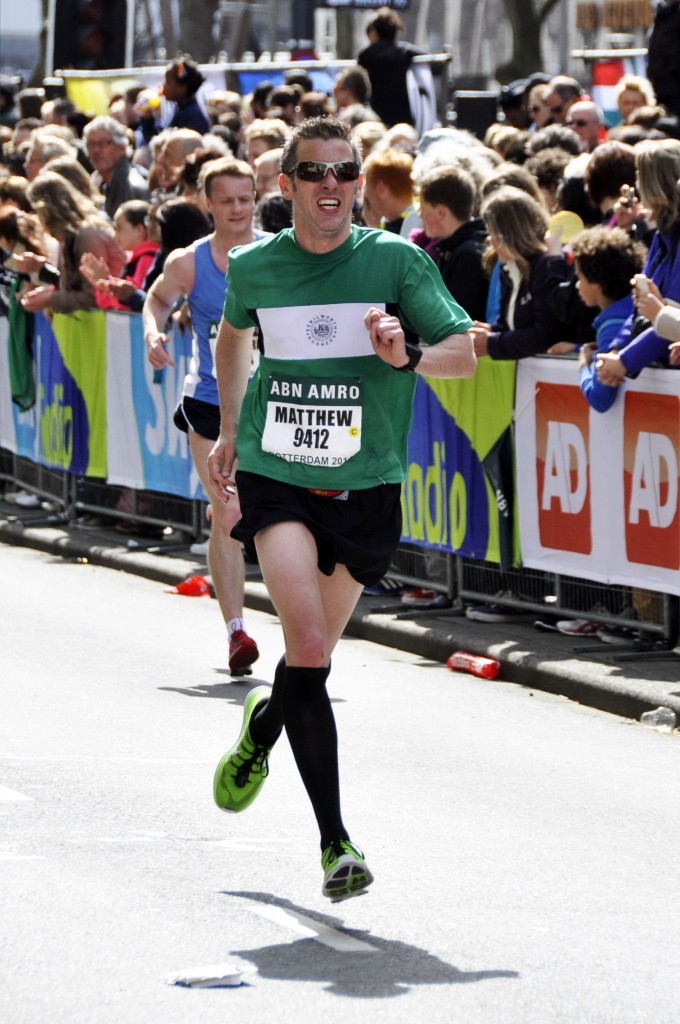
Finally I crossed the finish line. I’d done it. It was all over, nothing more to do. I looked at my watch. It read 2:46:39 – not far off the official time given later as 2:46:38 (Which, nearly a week after I raced, I’ve just realised meant I ran a 1:23:32 > 1:23:06 negative split – that alone I am happy with!) My average pace was 6:18, just one second outside the 6:17 required to break 2:45. Why the minute forty odd difference? A few seconds later I glanced at the distance – 26.48 miles, 0.28 of a mile over the official marathon distance.
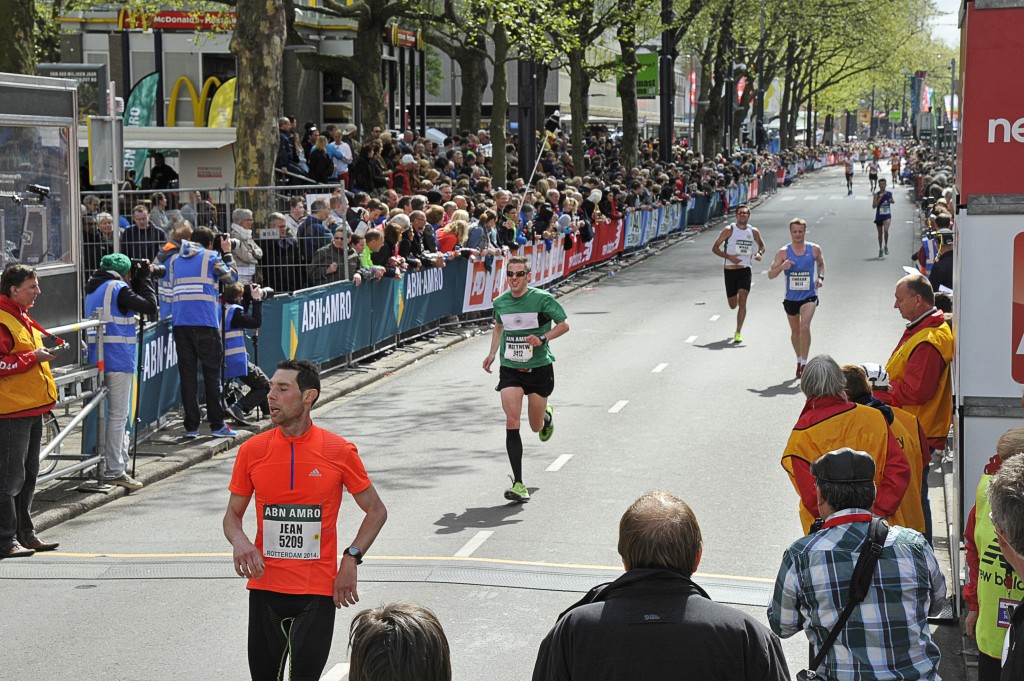
Then it twigged. In relying on the Garmin for mile splits and because there were no mile markers on the course, only kilometre marks (Of which I only have a limited grasp of their meaning, relatively, in race, terms), I’d no idea that the pace on my Garmin was slightly misleading because it had me down as running a fair bit further than the supposed course distance (Indeed, post race when I uploaded to Strava, it had me down as running the marathon in 2:45:11. Much closer, but, still, no cigar). I’m not usually that naive – indeed one of my mind preoccupation tricks during a race is to calculate the difference between the Garmin splits and the real mile markers to come up with the real pace needed to complete a race in a certain time. I’d paid the mistake of not taking a note of the times needed to pass through 5km splits at 2:45 pace. Another lesson learned for next time.
Part Three – Post Race
Sometimes when I finish marathons I am all smiles, relatively sprightly and comparatively unaffected by the demands of 26.2 miles of racing. Not today. I was spent. The adrenaline of the final sprint rapidly leaving me, I struggled to walk. I spotted a Portaloo and visited it, expecting the inevitable consequences of mid race stomach cramps to produce themselves. A few minutes later and there was nothing, but I was grateful at least for the sit down.
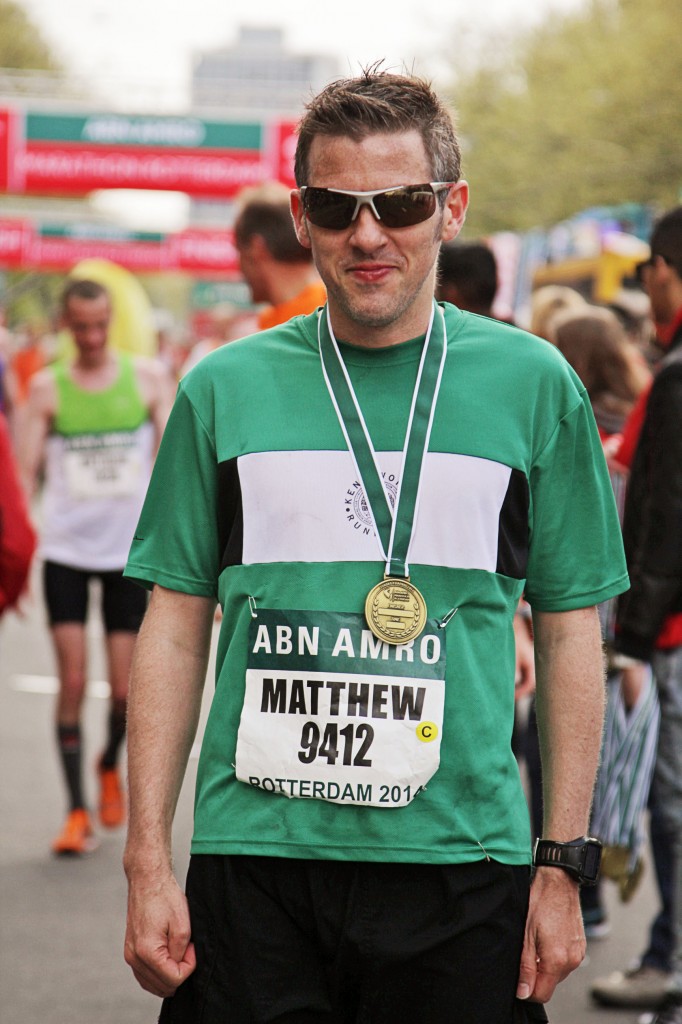
I collected my medal, a chunky affair, with ribbon in matching Kenilworth Runners / Grantham Running Club green (It turns out Rotterdam’s colour is green – not orange). There was one last cry of Martchoo, Martchoo, from the enthusiastic kids who’d handed out just 200 or so medals, and would have a long way to go before all 11,000 were handed out. Next was a banana – pre peeled, and not taken by myself, my stomach not one keen to demand food after a long run. Bottles of the local brew isotonic, as found on the course, were handed out. I happily took two, feeling very thirsty all of a sudden.
Then the strangest moment of the day. I was given a cup of tea! No milk for the British; not even lemon or sugar for the locals; just black tea. At first I scoffed at the idea, but, being a tourist again, I was willing to give it a try. Not hot, so able to be drunk in a couple of gulps, it was surprisingly delicious, the perfect antidote to hours of nothing but sickly sweet gels and energy drinks. I almost turned around and back to get another, but the effort of walking an extra 20 meters at the time outweighed any perceived benefits of an extra cup of cha.
A final cup of water later and that was it – we passed through a gate and the marathon was over. A little underwhelming, there was no goodie bag filled with tat and no space blanket, which with the wind and the walk home, may have actually been handy, It was just me, my medal, two bottles of isotonic and a long walk back to the hotel.
What took 10 minutes before the marathon took the better part of 45 minutes post marathon. The legs simply didn’t want to know. Instead I tried to savour the atmosphere of runners coming into the finish. It seemed an eternity since I’d crossed the line but these guys and girls were coming home in 3:03 – still highly respectable running. I think it was then it hit me that, despite not coming away with the dream of breaking 2:45, the 2:46 was still a huge personal best and, in terms of taking all runners into account and not just looking ahead at those better than you and who you aspire to match, I’m sitting in pretty rarefied territory.
I wanted to clap and cheer all the runners home, but my legs wanted the warmth and relaxation of my hotel bed more. I shuffled slowly along. When I stopped passing the runners coming into the final four hundred meters I passed runners who were at only around 16 miles. A lot looked in terrible misery then and had an awful long way to go. In many ways I have more respect for those to whom running doesn’t come easily or quickly who take on the challenge of a marathon. Running for four, five or six hours is an awfully long time, especially when the majority is spent in suffering. In reality although my marathon was never easy, it only became difficult around three miles from the finish – and that’s just 20 minutes or so of real suffering.
Around an hour after I finished, I made it finally back to the hotel, the two kilometres or so of walking far and away more taxing than the 42.2km of running that preceded it. The wife was the first to know my result sent by (not quite so) Instant Messaging. Then came a couple of hours break, when I showered, rested, and enjoyed a thrilling Paris-Roubaix cycle race. A Dutchman won, Feyenoord would then an hour later beat PSV to keep their title hopes alive. I PB’d in Rotterdam. Holland was happy. Rotterdam was happy, I was happy. Project Sub 2:45 continues to be targeted for another time, but the consequences of chasing that time has left me happy.
And that is what running is all about. It makes me happy. Except when I’m injured. And except when I am sh*t. And except when it is cold, wet and windy……
Stats and Graphs and Stuff:



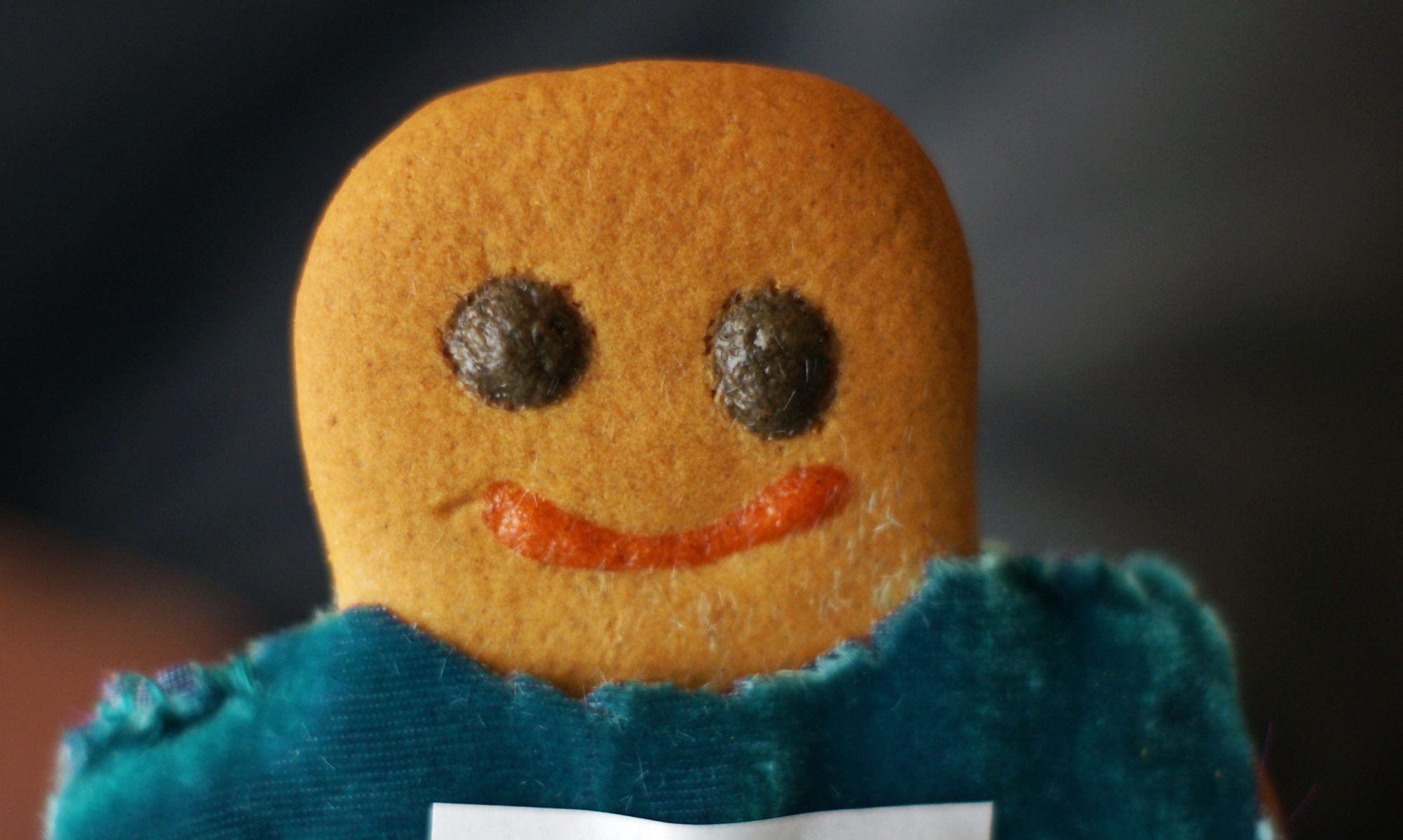
A great run and a fascinating race review. Well done!
Danny
(Stratford-upon-Avon AC)
I’m running this race next week (though aiming for a slightly less rarefied time in the 3:20 region!) and really enjoyed this report. Well done on the race, and for eventually breaking your 2:45 goal!
Thanks Will! Bit of a distant memory now, especially as I have my latest London Marathon to report on (Beginning on it as I type!) I hope your Rotterdam Marathon went to plan?